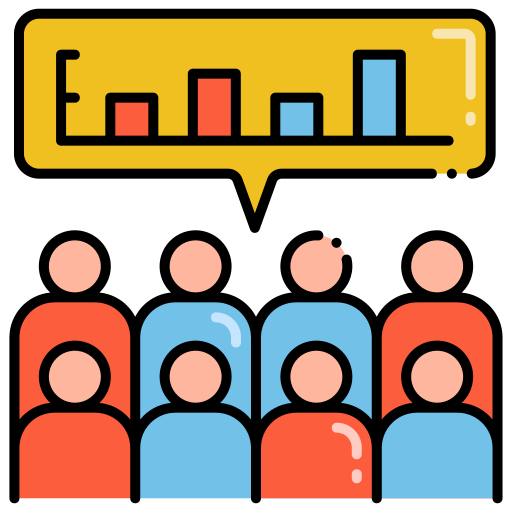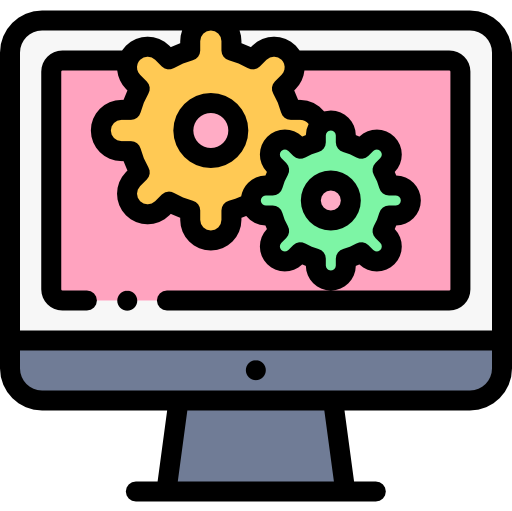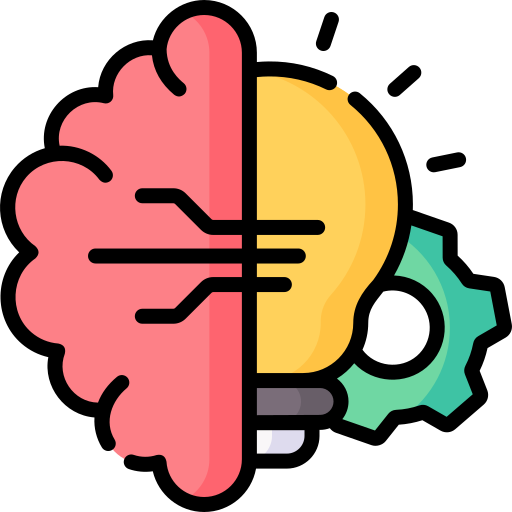What is Employee Engagement:
- With better access to technology and employee engagement data, HR consulting firms are churning out a number of figures and statistics around engagement every passing year based on global or nationwide surveys they run or through data they get from their clients, with Gallup being the front-runner of this phenomenon.
- While these statistics have led to employee engagement becoming a hot topic among HR professionals, there continues to be a lot of ambiguity around what really constitutes engagement, what these figures around engagement and disengagement mean, and how to drive employee engagement within an organization.
- And that’s exactly what we want to explore here. With this crisp guide, we aim to help you understand and foster employee engagement strategy in a more holistic way, guided by both academic and market research.
There is no one (universal) definition for employee engagement
- And that’s because employee engagement is a multi-faceted psychological construct that became mainstream only about two-three decades ago.
- As a result, most organizational psychologists, researchers, HR consulting firms, and SaaS employee engagement platforms follow varied definitions of engagement.
Engaged employees are those who are involved in, enthusiastic about and committed to their work and workplace.
The level of an employee's psychological investment in their organization.
The emotional commitment that we have to our organization and the organization’s goals.
The harnessing of organization members' selves to their work roles; in engagement, people employ and express themselves physically, cognitively, and emotionally during role performances.
A distinct and unique construct consisting of cognitive, emotional, and behavioral components that are associated with individual role performance.
A fundamental concept in the effort to understand and describe, both qualitatively and quantitatively, the nature of the relationship between an organization and its engaged employees.
- There are almost as many definitions of employee engagement as there are of HR consulting firms and thought leaders!
- It is interesting to note, however, that even in these myriad definitions are some underlying themes that are common to all of them.
- Let’s take a closer look.
Defining employee engagement holistically
Social Exchange Theory
Social exchange theory suggests that we essentially take the benefits and subtract the costs in order to determine how much a relationship is worth. Positive relationships are those in which the benefits outweigh the costs, while negative relationships occur when the costs are greater than the benefits.
- Engagement refers to an attitude or behavior of the employee that demonstrates their investment in the organization
- It defines the relationship between a satisfied employee and the organization
Building a little more on Saks theory, we define employee engagement as:
“The two-way mutual commitment between an organization and its engaged employees, where there is a healthy give and take that leaves both parties benefitted from the interaction.”
A Three-step Instant Employee Engagement Check
“Say”: Are your employees speaking positively about your organization to co-workers, customers and others?
“Stay”: Do they have a strong desire to be part of the organization?
“Strive”: Do they show readiness to put in expend discretionary effort without expectation of monetary rewards?
Exceptions in the employee engagement rule.
- You might wonder if an organization is giving similar resources and support to its employees, why then is the engagement levels among employees so varied.
- One reason is that within the same organization itself, the opportunities, resources, and support each employee has access to vary.
“There has to be a deep-seated desire in your heart and mind to participate, to be involved, and to make a difference. If the desire isn’t there, no person or book can plant it within you.”–Tim Clark, President of Emirates
- And the other reason that often tends to get overlooked is the individual differences in perception. Every person makes sense of their environment, interprets and responds to people and situations around them in their unique way. This could be a result of their personality, past experiences, knowledge, expectations, priorities, and interests.
- For instance, Steve and Renu both have flexible working hours. Steve effectively utilizes this opportunity to balance his personal interests and professional life, and the organization observes a boost in his engagement. On the flip side, Renu prefers stricter timelines, and the flexibility cripples her time management skills, leaving her working extra long hours. As a result, Renu is often frustrated and less engaged.Similarly, Maria loves the autonomy that her manager gives her to make decisions that impact her work. However, Ali perceives this as a lack of interest from his manager’s side to guide him. Quite obviously, you know who is engaged and who isn’t!
- Based on the above, it is safe to conclude that workplace engagement is not an objective understanding of what an organization is offering its employees. It will also be subject to individual differences. However, it is important to note here that research has shown that there are certain consistent factors that drive engagement among all workers, which we’ll discuss soon.
Hire for culture fit.
Bring on board people with similar personalities, qualities and behavioral traits that suit the company culture you want at your workplace.
While hard skills such as experience and skill sets are important, an organization’s ability to retain and get the best from an employee depends on how aligned the employee feels with the organization.
For instance, an organization that relies heavily on individual initiative and independent tasks may not be a cultural fit for someone who works more effectively in collaborative teams.
Or, an employee who values flexible work timing may not be a good fit in a team that works around strict timelines.
Let 75% of your onboarding process decision be based on skills and experiences and the rest 25% on cultural fit.
Employee Engagement is not
Employee satisfaction
Simply put, engaged employees are satisfied with their jobs, but satisfied employees aren't necessarily engaged at work.
What does this mean?
However, here’s where employee satisfaction falls short of engagement.
Satisfied employees won’t necessarily align with the larger purpose of the organization's success, innovate new products or services, help co-workers, etc., which are all evident behavioral traits of an engaged employee.
Employee motivation
Motivation is anything that drives an individual to act in a certain way to achieve a specific goal.
Recognition from the manager is a motivator, and so is fear of the manager. Both will get employees to complete their work effectively and on time.
However, an employee who is motivated to work out of fear of their manager won’t be engaged.
Employee experience
A term that rose to popularity not more than a few years ago, employee experience (EX) refers to every touchpoint in an employee’s life cycle that defines their experience with the company. This includes the facilities, the IT infrastructure, the policies, etc., that define an employee’s day-to-day experience.
Now how is employee experience different from employee engagement?
Employee experience can be looked at more as the input and engagement as the resultant output. The more an organization invests in creating a better employee experience, the better will also be employee engagement.
Employee happiness
Happiness is an intrinsic state of being. No matter what an individual’s external circumstance is, an employee can choose to be happy or not.
Happy employees are great for a workplace because happiness is infectious. However, a happy employee does not guarantee loyalty, commitment, innovative spirit, or enthusiasm toward their work, which are pillars of the employee engagement strategy.
Employee wellbeing
Employee well-being is mainly about reducing work-related stress and instituting incentives for healthy living. The focus here is on the physical, mental, and psychological health of an employee.
In terms of employee engagement and well-being, well-being can be considered as a factor that can enhance engagement.
For example, HuffPost offers its employees meditation and yoga classes throughout the week, and through their Virgin Pulse wellness program, employees can also earn monetary incentives.
In short, all of these terms, in some form, contribute to employee engagement, and engagement in itself can be seen as a larger umbrella concept that encompasses all of the above.
Drivers of employee engagement
Emotions inform an individual’s behavior and actions. “How one feels about one's work” will determine “how one responds to it”. When organizations are able to drive positive emotions like pride, involvement, etc., among their employees, then they are able to be more open-minded, think flexibly, deal with confrontations more thoughtfully and be less defensive at the workplace, all of which enhance employee engagement.
In the two-way relationship between an employer and employee that leads to engagement, there are certain drivers that research has, time and again, demonstrated to impact employee engagement. These drivers fall under four categories:
- An employee’s perception of their job role
- Connect with the team members
- Interaction with the manager
- An organization’s offering
For most of them, it can be summed up by one of four things: They love what they do (their JOB), they love the Disney brand (their ORGANIZATION), they love their manager (their BOSS), or they love the people they work with (their SQUAD).— Pete Blank, Employee Engagement Thought Leader
An employee’s perception of their job role
- Do your employees love what they do?
- Loving one’s job does not necessarily have to be a utopian concept. In fact, Kahn’s research on employee engagement and that of his successors show "finding meaning in one’s job" as a primary contributor to employee engagement.
- Now the question is, what drives meaning in one’s job?
Role clarity: When employees have clarity on what their jobs entail, they are able to carry out their day-to-day tasks with confidence and with full knowledge of how their work impacts business. A job description is a great recruiting tool but often does not deliver the kind of job clarity an employee seeks. Job clarity is an ongoing process where the manager can help the employee through any challenges they are facing and also help them align their personal goals with their roles.
Autonomy: Freedom to make decisions that are important to their performance and the quality of their working lives encourages employees to take full ownership of their roles and deliver with commitment. And autonomy can vary based on the the type of role an employee is in and the organization's culture. For instance, while some organizations can give employees the autonomy to choose their work hours, others might be able to give them a choice to make decisions in how they execute their work. Let’s say autonomy is also the antithesis of micromanagement.
Capacity: If you want your employees to cut a tree, give them an axe. If you want them to go fishing, give them a fishing rod. No amount of role clarity or autonomy can help if employees do not have easy access to the right resources and tools to carry out their jobs. And in the absence of the capacity needed to carry out their work, employees often take long, winding routes to accomplish tasks that are time-consuming and leave the employees feeling incompetent and discouraged.
Professional development: Every employee has aspirations. To be able to have access to opportunities within the organization that align with their aspirations is critical for employee engagement. Not just that, they also often look for someone, like a manager, to encourage and motivate employees to take advantage of these opportunities. Professional development opportunities include a promotion, training, and learning options.
Recognition: How can an employee know that they are doing a great job at their work? By being recognized for it. However, it is not always necessary that these recognitions come in monetary forms alone. Public recognition from leadership or their manager - words of appreciation - with specific details of the work well done serves as a great opportunity to engage employees.
Autonomy for your blue-collar employees?
In 1990, Julie Beardwell and Tim Claydon conducted research on factory workers and the number of injuries they reported based on differing levels of control over their work.
It was found that, after the staff was given the training and autonomy to make repairs to their own equipment instead of calling the supervisor every time they encountered a problem, they reported fewer occupational injuries.
One can conclude that when workers experience more autonomy over their work -autonomy being a key contributor to employee engagement - they are likely to be more focused and less prone to mistakes.
Connect with the team members
- We are social animals. So be it at work or outside, we constantly keep seeking ways to belong with a group or community.
- A workplace can never be devoid of meaningful relationships.
- And a truly engaged employee will not have to fit in with their team but will feel like they truly belong.
- What’s the difference?
- Fitting in is when employees assess the people and situation and try to shape themselves differently than who they are to be accepted. In the long run, fitting in isn’t sustainable, and employees will eventually become disengaged.
- Whereas belonging is when engaged employees feel like they can be themselves at work and do not have to pretend to be something they are not constantly.
- Factors that drive employees to connect with the team and, thereby, their belongingness are:
Collaboration: How well an employee is able to collaborate with the team demonstrates the safety, trust and camaraderie with the team members. Since employees spend the most time with their team members, an inability to collaborate effectively with the team can be detrimental to employee engagement. For example, if someone feels like other team members are not effectively doing their share of work, it can negatively influence the engagement levels of this employee.
Support: Can employees turn to one or more of their teammates when they need help? Will teammates fill in for each other if one of them is on leave or is dealing with issues that are affecting their productivity? These forms of voluntary support among team members greatly drive employee engagement.
Mutual respect: Can team members also voice disagreement or dissent with ease? A great sign of healthy team engagement and a positive indicator of engagement is when teams make space for healthy arguments and disagreements and can still continue to work towards shared goals.
Being seen and heard: Can employees be themselves around at least one team member? To be able to remove their professional masks and be fully seen for who they are is crucial to building and nurturing strong bonds within a team. This doesn’t necessarily have to be with everyone on the team. Gallup Q12 survey suggests that even if an employee has one friend in the team, it can boost employee engagement substantially.
Wondering who we are and why we wrote this?
We are CultureMonkey, an AI-powered employee engagement software. Simply put, we help you listen to your employees better.
Employee engagement surveys
Pulse surveys
Employee feedback management
Feedback actions
HR analytics and reporting
Interaction with the manager
- The employee-manager dynamic is critical to measure employee engagement. With managers being an extension of the organization’s leadership team, employees look to their managers not just in terms of team leads who get work done but also as mentors, guides, credible sources of company information, and more.
- We all know the famous saying, “Employees quit managers, not organizations.” Research after research validates the impact of managers on an employee’s engagement levels.
- But what factors of this relationship contribute to employee engagement?
Fairness: Employees inevitably compare their situation to that of their coworkers. In those terms, is the manager supportive of everyone equally? Is he/she taking a keen interest in everyone’s work and professional growth? Is he/she giving due credit to each employee? All of these factors that point to the fairness demonstrated by the manager are crucial to employee engagement.
Availability: Can employees turn to one or more of their teammates when they need help? Will teammates fill in for each other if one of them is on leave or is dealing with issues that is affecting their productivity? These forms of voluntary support among team members greatly drive employee engagement.
Integrity: Does a manager walk the talk? Can a manager lead by example? Do managers’ actions align with their words? The integrity of a manager is primarily gauged by dependability and reliability; if they follow through with what they have said, they will do.
Support: When a manager shows genuine interest in an employee - both professionally and personally, employees feel valued and engaged. Take each of our own personal examples. When have we most felt engaged with an organization? Was it when we had a boss who helped us grow in our careers, gave us the freedom to make decisions, and guided us?
An organization’s offering
- What an organization has to offer an employee is considered the most basic to employee engagement.
Leadership: Trust in leadership is of utmost importance. And trust is built when:
- Business leaders communicate transparently and consistently with the entire organization
- Employees get to see them often
- Leaders demonstrate an interest in employees. Say, personally appreciating an employee or team for a job well done
Employee feedback: Employees want to have a say in decisions that are made in the organization. The opportunity to feed their opinions and views upward is a positive indicator of employee engagement. However, many organizations either fail to give employees such a platform to share their continuous feedback or miss acknowledge employee feedback, both of which can be equally detrimental to employee engagement.
Work Environment: A conducive and safe physical environment is non-negotiable in engaging employees. While some employees, especially in manufacturing, might prioritize safety, others in the creative field might expect a more aesthetically designed workspace. Either way, a positive work environment with good lighting, accessibility features, and decor is bound to improve employee engagement, whereas dangerous, unhealthy, and unappealing office spaces can increase employee disengagement costs.
Work-life balance: Imagine an employee who is spending more than 12-15 hours a day at work? This person is not only going to be exhausted by the end of the day but won’t also have time or energy left to invest in other aspects of their life. As a result, their resentment and frustration will skyrocket, and in effect, their engagement levels will plummet. Charles Duhigg’s definition of productivity resonates very well with employee engagement, “Getting things done without sacrificing everything we care about along the way.”
Competitive pay: Of course, while competitive salary and benefits are not everything that drives engagement, the absence of it can be disengaging for employees. And in today’s world, competitive pay includes more than just money. It also includes benefits and bonuses that employees will really value. For instance, paid family leave, paternity leave, stock options, paid time off to volunteer, free food and beverages, and more.
As an organization meets each of these drivers of employee engagement important since it becomes more attractive to job seekers and becomes more engaging to its existing staff.
Levels of employee engagement
- Employees at an organization fall along the spectrum of employee engagement basis the impact of the drivers of engagement on each of them.
Disengaged employees: These employees are actively resentful of the organization and are underperformers. They tend to openly criticize the organization, their work, or managers, which can also negatively impact other employees.
- →“I am here for the money”
- →“I am not satisfied with my job.”
- →“I will leave as soon as I can.”
- →“I don’t like the organization or my team.”
- →“I dread coming to the office.”
- →“My eyes are always on the clock.”
Not engaged employees: These employees fulfil their job responsibilities but are neutral about the organization. They mostly work on autopilot and are concerned about their paycheck. Almost engaged employees will need more reason to engage with the organization actively.
- →“I am happy to work here but won’t shout it from the rooftops.”
- →“I might leave if I’m tempted.”
- →“I am almost engaged, but there are a lot of times when I’m not.”
- →“I think I’m a part of something bigger.”
- →“I don’t know if I have employee development opportunities here.”
Almost Engaged Employees: These employees give their full at work and feel valued in the organization. They actively participate in decisions that affect employee engagement, and their work and share a cordial relationship with team members. They are also very satisfied with personal development opportunities within the organization.
- →“I am happy to work here but won’t shout it from the rooftops.”
- →“I might leave if I’m tempted.”
- →“I am almost engaged, but there are a lot of times when I’m not.”
- →“I think I’m a part of something bigger.”
- →“I don’t know if I have career development opportunities here.”
Engaged Employees:These employees give their full at work and feel valued in the organization. They actively participate in decisions that affect their work and share a cordial relationship with team members. They are also very satisfied with personal development opportunities within the organization.
- →“I’m an achiever.”
- →“I’m constantly busy, maybe a little overstressed too.”
- →“I may consider a job offer if it comes my way.”
- →“I feel important at work.”
- →“I appreciate the growth & learning opportunities I have here.”
Highly engaged employees:These employees love the work they do and are fully committed to the organization's mission. They bring with them a very positive attitude that is infectious and can positively impact others around them. They have a great sense of pride in the organization and the work that they do and are very vocal about it. In short, they are also your brand ambassadors.
- →“I love working here.”
- →“I am a high flyer.”
- →“I inspire others.”
- →“I proactively help others.”
How to improve employee engagement?
Start with effectively measuring employee engagement
- Employee engagement is an outcome of the aforementioned drivers of engagement. One of the easiest ways to measure employee engagement is by measuring the drivers through employee engagement surveys.
- It is important to note, however, that while we discussed all the drivers of engagement in our previous section, not all of them have the same weightage across every organization.
- For instance, a non-profit might give a lot more significance to the meaningfulness of work and leadership over other drivers. Similarly, a project management company will lay emphasis on collaboration and capacity.
- The drivers of engagement that you identify as important for your organization will depend and greatly vary based on the following:
- The organizational culture
- The type of industry
- Type of job
- The personality of your workforce
- To identify employee engagement important drivers at your organization, here’s an adaptation of Maslow’s Hierarchy of Needs that will be of help.
- Using the above pyramid as the foundation, you can categorize the drivers of employee engagement into five segments based on your organization’s culture, industry, type of job, and workforce personality.
- Once you have identified the drivers, write down one or two open-ended or close-ended questions that check the employee satisfaction levels of employees for each of those drivers.
- For example, for the driver work-life balance, you would ask:
- How often do you work beyond your specified working hours?
- Do you have enough time to destress from your work schedule?
- Or, for driver recognition, you might ask:
- Do you feel appreciated at work?
- Were you recognized by your manager for your contribution in the last 30 days?
- Once you have your employee engagement survey questions ready, administer the employee survey to your workforce. Garner maximum participation for the survey by communicating with your employees and launching the survey across platforms that are easily accessible to them.
- Alternatively, you could use employee engagement software that will automate end-to-end employee engagement management for the HR department. This software should enable you to identify the drivers of engagement at your workplace, measure employee engagement over time, and suggest action plans to enable you to improve your engagement scores.
- Let’s delve a little deeper into what employee engagement software can do for you.
Why opt for employee engagement software?
- In the last decade or two, Artificial Intelligence (AI) and Machine Learning (ML) have transformed the business landscape. These technological prowesses have enabled organizations to make data-backed decisions, gain unparalleled visibility into operations, and attain better control over the business.
- In the area of employee engagement too, the potential that AI & ML showing is immense.
- If you have been following an internal process to measure and improve employee engagement, or if you have been engaging a third party only to run employee surveys, here’s what an employee engagement software can do differently for you.
Responsive and real-time feedback: The ‘waiting time’ between running an employee engagement survey to accessing the results can be cut down to as little as a few seconds with employee engagement software. This way, you can act on issues impacting employee engagement right then and there. In addition, advanced AI also lets you analyze employee moods and identify the emotions behind an employee’s response to an employee engagement survey.
Predictive capabilities: There are patterns in data that a human eye may miss. An employee engagement tool can identify patterns in responses to an employee survey and predict quitting tendencies. This way, organizations can act on employee issues and retain top talent by studying their behavior and taking appropriate actions to keep them engaged.
More than just a survey: An employee engagement platform isn’t just about running employee surveys. A good employee engagement tool will help you slice data and study employee engagement strengths and pain points across teams, gender, location, and more. A good add-on would be when it will also auto-suggest actions to work around the areas of improvement and nudge the right stakeholders in the organization to carry out these actions.
Driver analysis: We discussed earlier how drivers of employee engagement could vary from one organization to the other. This means beyond the high and low scores one might get on various drivers of engagement, you must also understand if these drivers actually contribute to engagement at your workplace. For instance, if your organization has been consistently scoring low on “capacity” and no amount of discretionary effort is improving employee engagement score, driver analysis by the employee engagement app can help you identify if capacity is a definitive contributor to employee engagement at your organization.
Benchmarking: An ideal employee engagement software will give you insights into the patterns and trends in engagement with respect to your organization and comparable with competitors in your industry. It will also let you benchmark the desired performance of teams and managers against their actual performance.
In short, the best employee engagement platforms will not only help you run surveys but also implement, monitor, and improve employee engagement strategies across the board.
If you are headed in the direction of investing in employee engagement software, ensure all the above boxes are checked before jumping right in.
Lastly, did we miss telling you…
The benefits of employee engagement
- If you are still wondering why all the hype around employee engagement, here’s why.
- Or, if you are looking at data points to convince your c-suite, here goes.
- Employee engagement is intrinsically interwoven with business outcomes.
- Engaged workplaces see 41% lower rates of absenteeism
- Engaged workforces are 17% more productive
- Highly engaged teams achieve 59% less turnover
- Engaged teams report 41% fewer quality incidents
- Engaged organizations see 20% higher sales
- A 5-point increase in engagement results in a 3% increase in revenue
- Engaged employees lead and outperform others by 202%
Data-informed employee engagement
CultureMonkey: A single source of truth to measure and manage employee engagement. Create a safe space where your employees can voice their feedback and concerns.
Having trouble measuring employee engagement?
Unable to set employee engagement metrics and compare your improvements year-over-year?
Taking more than 2+ weeks to analyze results from your employee engagement survey?
Is there no way to segment the data in a sensible way?
Is there no simple and easily digestible real-time data visualization?
If your answer is “yes” to any of the above questions, we can help you. Schedule a 30-min free demo with our product experts.
















